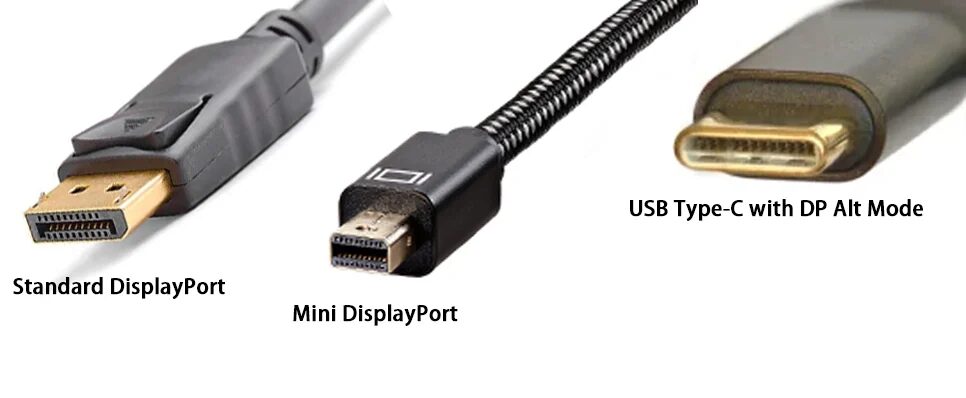In a international driven with the aid of more and more sophisticated presentations and ultra-excessive-definition content, DisplayPort has emerged as the leading popular for digital video and audio connectivity. whether you are a gamer, content writer, or regular pc person, expertise what DisplayPort is and what it offers can significantly decorate your multimedia enjoy.
what is DisplayPort?
DisplayPort is a virtual show interface advanced by way of the Video Electronics standards affiliation (VESA).
In 2006, it changed into designed to replace older requirements like VGA and DVI even as providing better performance and greater versatility. not like HDMI, which become to start with evolved for purchaser electronics like TVs and Blu-ray gamers, DisplayPort turned into developed often for computer systems and expert-grade monitors.
How DisplayPort Works
DisplayPort transmits digital signals of video and audio records via a unmarried cable. It uses packetized information transmission—much like how records is dispatched over USB or Ethernet. This method lets in for more scalability, advanced information integrity, and help for better resolutions and refresh costs.
A typical DisplayPort cable has 20 pins and helps both lively and passive adapters, making it especially adaptable to numerous gadgets. It additionally supports auxiliary channels that allow for contact and digicam facts transmission, electricity shipping, and more.
variations and abilities
DisplayPort has seen several fundamental updates since its inception. here’s a breakdown of key variations:
DisplayPort 1.2
- added in 2009
- supports up to 4K resolution at 60Hz
- adds assist for multi-circulation transport (MST), permitting a couple of video display units on one cable
DisplayPort 1.3 and 1.four
- released in 2014 and 2016 respectively
- Boosted bandwidth to 32.four Gbps
- helps 5K and 8K resolutions, excessive Dynamic range (HDR), and advanced audio capabilities
DisplayPort 2.0 and past
- introduced in 2019
- offers a massive 77.4 Gbps bandwidth
- permits 8K at 60Hz with HDR or 4K at 240Hz
- supports daisy-chaining of more than one excessive-resolution monitors
- full compatibility with USB-C through DisplayPort Alt Mode
DisplayPort 2.1, released in 2022, further tightened integration with USB4 and Thunderbolt requirements, making sure better interoperability with future devices.
DisplayPort vs. HDMI
Both DisplayPort and HDMI are capable digital interfaces, but they serve slightly different audiences and use cases.
|
Feature |
DisplayPort |
HDMI |
|
Target Audience |
PC Monitors, High-End Displays |
TVs, Projectors, Consumer Media |
|
Max Resolution (Latest Standard) |
16K (DP 2.1) |
10K (HDMI 2.1) |
|
Bandwidth |
Up to 80 Gbps (DP 2.1) |
Up to 48 Gbps (HDMI 2.1) |
|
Audio Return Channel |
No |
Yes (eARC in HDMI 2.1) |
|
Daisy-Chaining |
Yes (via MST) |
No |
For professionals who need multiple high-resolution displays or gamers who want higher refresh rates, DisplayPort is generally the better choice. HDMI, however, remains dominant in the home entertainment sector due to widespread compatibility with TVs and AV receivers.
DisplayPort Alt Mode and USB-C

one of the most thrilling advancements in DisplayPort generation is its integration with USB-C via DisplayPort Alt Mode. This allows USB-C ports to carry DisplayPort video signals, making it possible to transmit video, audio, records, and strength via a unmarried, reversible cable.
Laptops, smartphones, and docking stations an increasing number of leverage DisplayPort Alt Mode to deliver seamless and clutter-free connectivity. for instance, a single USB-C cable can now join a computer to a display, offer energy, and allow records transfer—all simultaneously.
Key advantages of DisplayPort
1. Higher Bandwidth
With bandwidths exceeding 77 Gbps in DisplayPort 2.0, it without problems handles ultra-high-resolution shows, speedy refresh rates, and deep shade codecs.
2. Multi-reveal aid
DisplayPort’s MST (Multi-move shipping) allows multiple video display units to be linked thru a unmarried output port, decreasing cable muddle and simplifying setups.
3. Adaptive Sync aid
DisplayPort natively supports Adaptive Sync, a key function in decreasing display tearing and stuttering throughout gameplay. This generation is the inspiration of AMD’s FreeSync and is also supported via NVIDIA’s G-Sync on compatible monitors.
4. Backward Compatibility
DisplayPort is designed with backward compatibility in thoughts. you could use adapters to convert to HDMI, DVI, or VGA, making sure older video display units and devices are nevertheless usable.
5. Open fashionable
unlike HDMI, which requires licensing costs, DisplayPort is a royalty-loose standard. This encourages innovation and lowers fees for manufacturers and consumers alike.
Common Use cases
- Gaming: gamers choose DisplayPort for its better refresh price help (up to 240Hz or extra), lower latency, and Adaptive Sync capabilities.
- professional Workstations: Designers, video editors, and statistics analysts advantage from DisplayPort’s assist for high resolutions and shade accuracy.
- office productiveness: Multi-display setups are effortlessly completed with daisy-chaining, making DisplayPort ideal for expert environments.
Conclusion:
As show technology evolve, DisplayPort maintains to steer the way in providing high-performance, flexible, and destiny-evidence connectivity. whether or not you are connecting a excessive-quit gaming screen, creating a multi-screen productiveness hub, or trying to simplify your workspace with USB-C, DisplayPort promises the electricity and capabilities to fulfill cutting-edge demands.
In a virtual global that demands more pixels, quicker body quotes, and seamless connectivity, DisplayPort isn’t always simply an choice—it is the standard of the future.






























